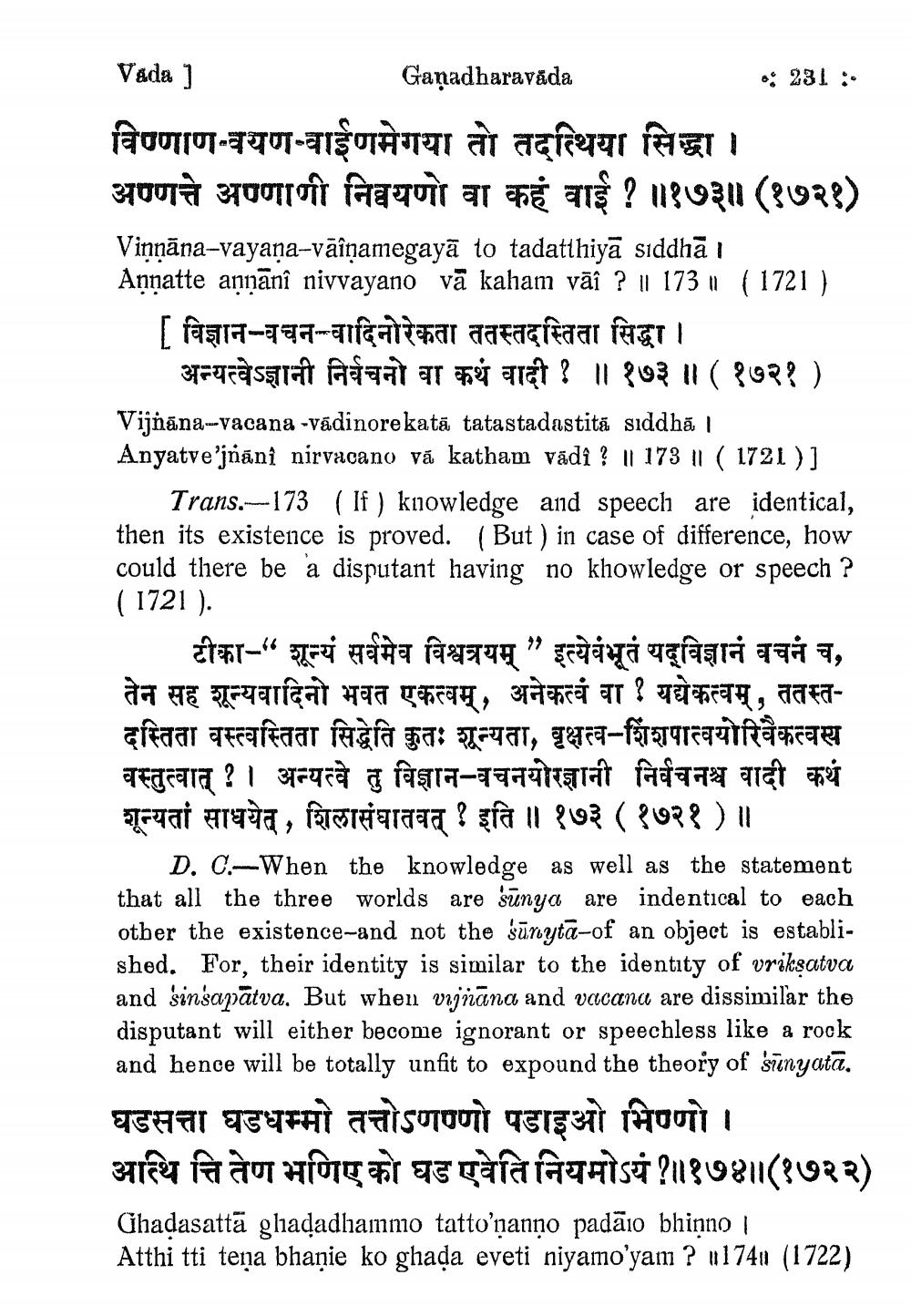________________
Vada] Gañadharavada
:231:. विण्णाण-वयण-वाईणमेगया तो तदत्थिया सिद्धा । अण्णत्ते अण्णाणी निव्वयणो वा कहं वाई ? ॥१७३॥ (१७२१) Vinnāna-vayana-vāînamegayā to tadatthiyā siddhā i Annatte annani nivvayano va kaham vai ? || 173 ॥ ( 1721 ) [विज्ञान-वचन-वादिनोरेकता ततस्तदस्तिता सिद्धा ।
अन्यत्वेऽज्ञानी निर्वचनो वा कथं वादी ? ॥ १७३ ॥ (१७२१ ) Vijñāna-vacana -vadinore katā tatastadastitā siddhā 1 Anyatve'jñāni nirvacano vă katham vadî ? || 173 11 ( 1721)]
Trans.--173 ( If ) knowledge and speech are identical, then its existence is proved. ( But ) in case of difference, how could there be a disputant having no khowledge or speech ? ( 1721 ).
____टीका-" शून्यं सर्वमेव विश्वत्रयम्" इत्येवंभूतं यद्विज्ञानं वचनं च, तेन सह शून्यवादिनो भवत एकत्वम्, अनेकत्वं वा ? योकत्वम् , ततस्तदस्तिता वस्त्वस्तिता सिद्धेति कुतः शून्यता, वृक्षत्व-शिंशपात्वयोरिवैकत्वस्य वस्तुत्वात् ? । अन्यत्वे तु विज्ञान-वचनयोरज्ञानी निर्वचनश्च वादी कथं शून्यतां साधयेत् , शिलासंघातवत् ? इति ॥ १७३ (१७२१)॥ ____D. C.-When the knowledge as well as the statement that all the three worlds are sunya are indentical to each other the existence-and not the sunyta-of an object is established. For, their identity is similar to the identity of vriksatva and sinsapātva. But when vijnana and vacana are dissimilar the disputant will either become ignorant or speechless like a rock and hence will be totally unfit to expound the theory of šūnyatā. घडसत्ता घडधम्मो तत्तोऽणण्णो पडाइओ भिण्णो । आत्थि त्ति तेण भणिए को घड एवेति नियमोऽयं ॥१७॥(१७२२) Ghadasattā gladadhammo tatto'ịanno padalo bhiņno i Atthi tti tena bhanie ko ghada eveti niyamo'yam ? ॥1740 (1722)




